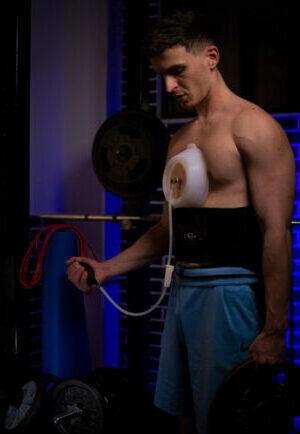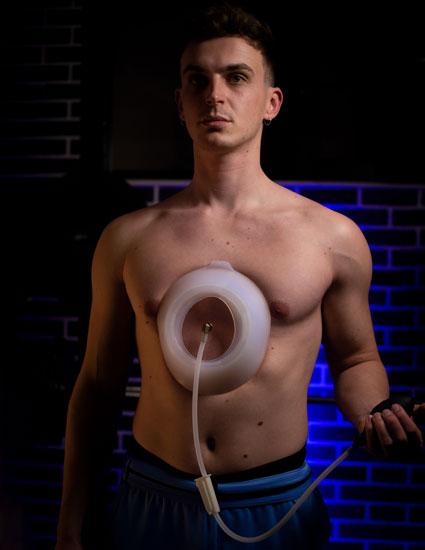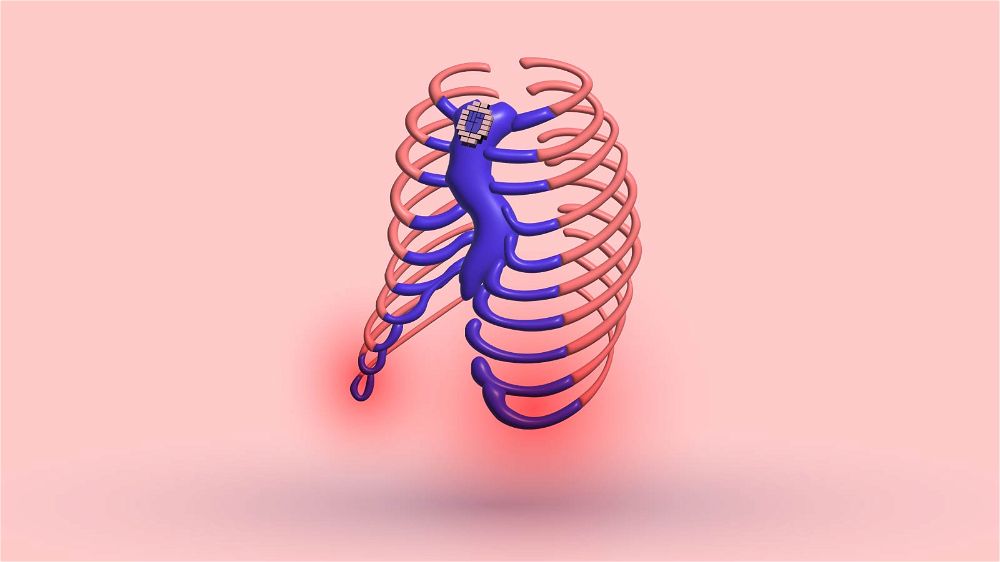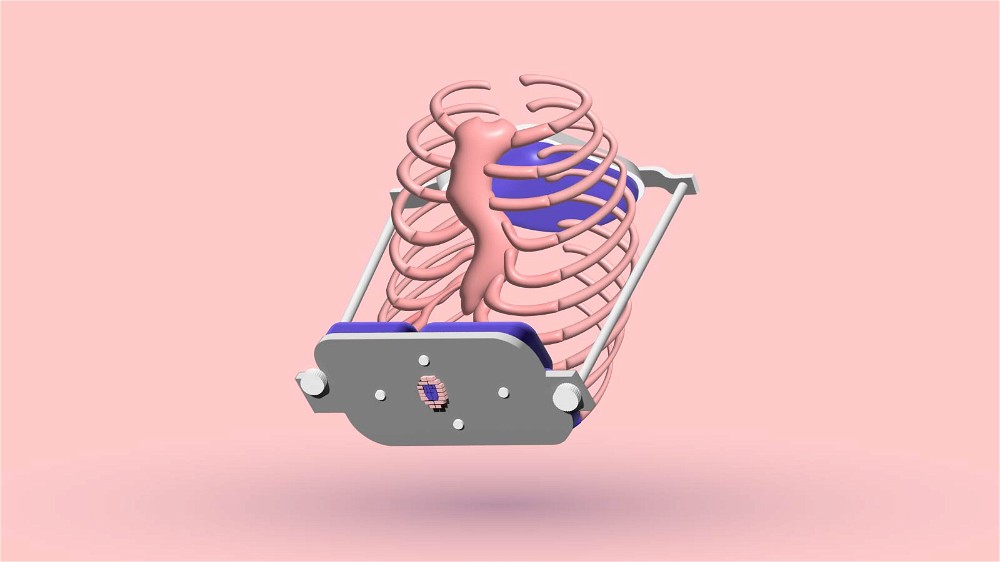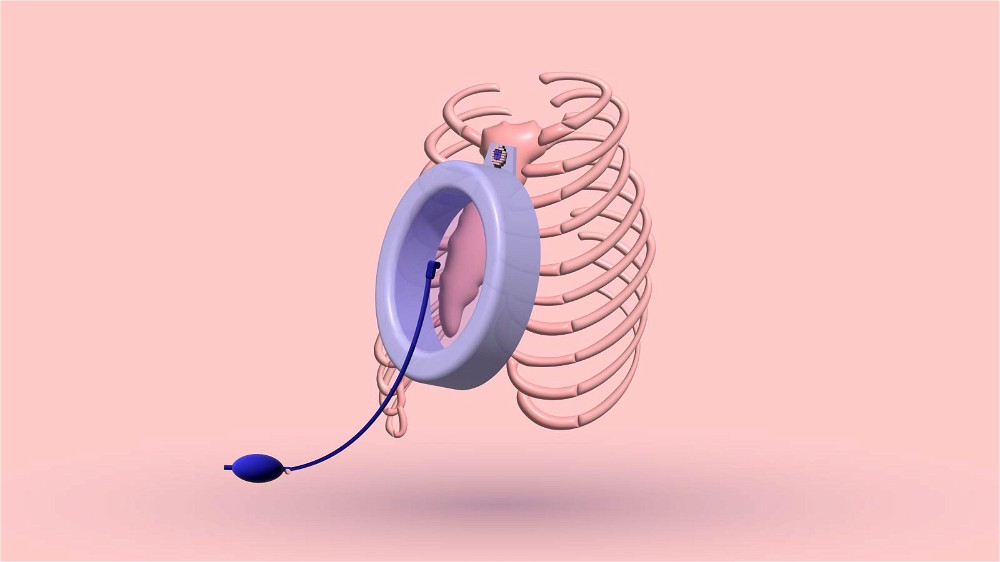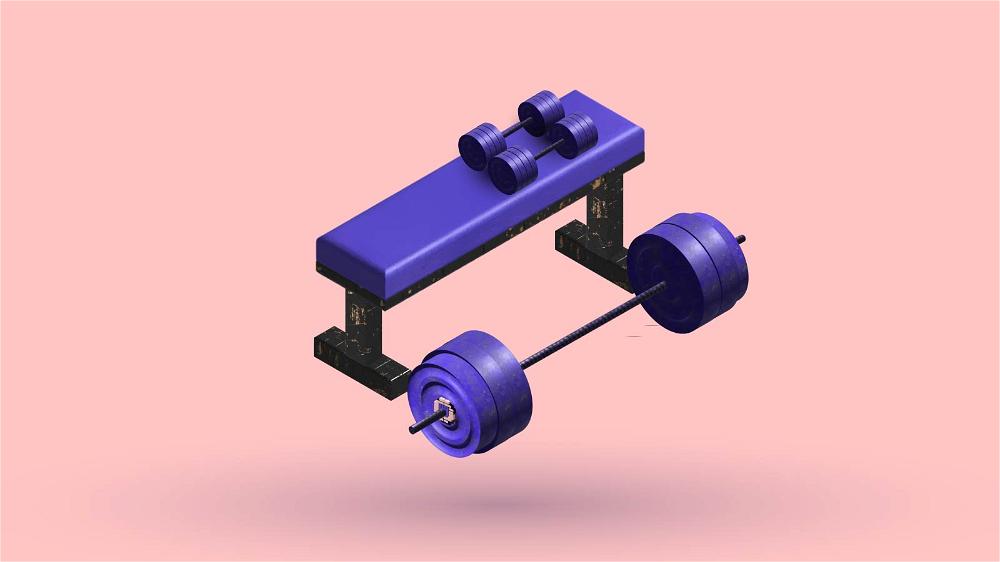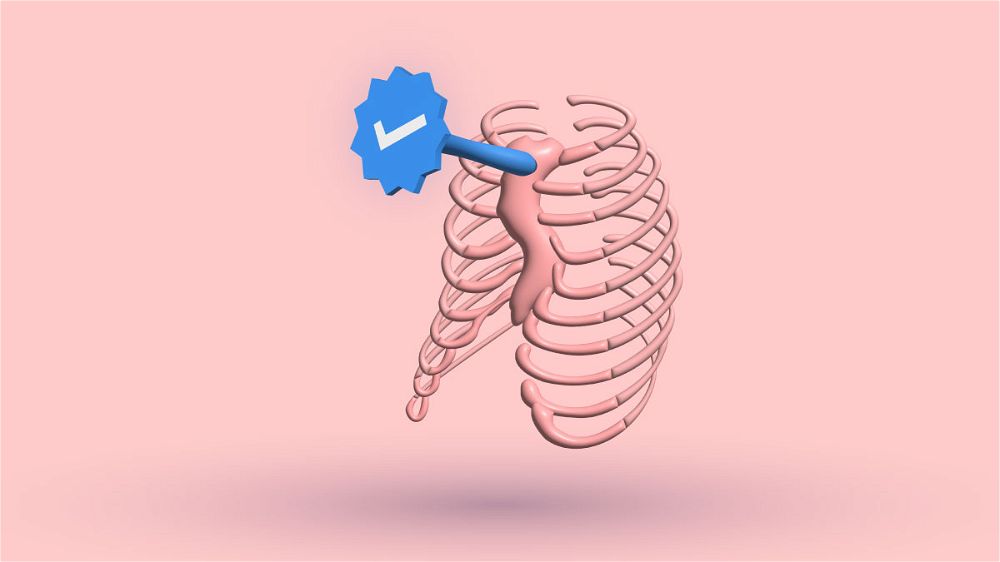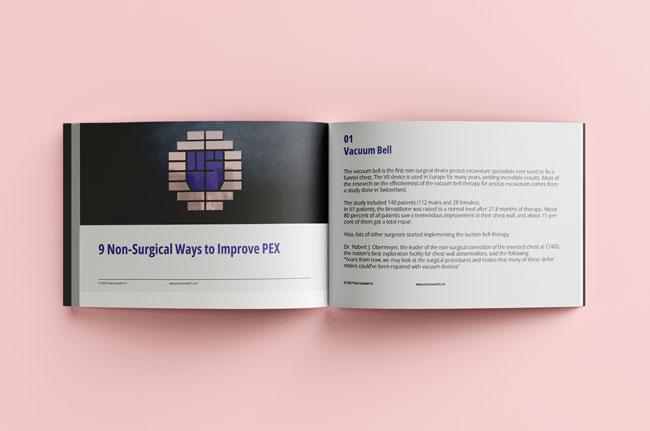I dedicate this post to another intriguing, alluring, and perhaps unconventional activity that can unquestionably help improve the pectus excavatum deformity.
Since sports are a universal medication for our bodies, not just hollow chest deformities, triathlon is an overlooked endurance activity.
What is Triathlon?
Triathlon is a long-distance multisport competition that combines swimming, cycling, and running. Triathletes compete for the quickest total completion time by racing in each segment while keeping track of the passing time between the various disciplines.
5 Benefits of Triathlon for Pectus Excavatum
Undoubtedly, this sport offers a long list of benefits for those of us who have a problem with pectus excavatum. Here are some essential sub-points why deciding on a triathlon is an excellent choice.
Improved Physical and Mental Health
A triathlon can be ideal physical activity that combines heart functioning improvement and muscle gain, which is very important for someone with a pectus deformity.
Each triathlon stage requires activating a different set of muscles, and that triathlon provides a full-body workout.
That keeps your entire physique to be strong, not just one area.
This sport would also help you mentally by challenging you to finish every step.
Another advantage is the necessity to do this sport during the day, resulting in exposure to the sun. This is usually unavoidable but offers many advantages for optimal hormonal and overall health.
The release of a hormone called serotonin from the brain is known to increase with sun exposure. Your mood can improve, and you will feel more relaxed and focused by releasing this hormone.
Decreased Risk of Injury
Practicing a regular triathlon will make your body less likely to sustain a localized injury or feel pain.
Social Activity
We are aware of the adverse psychological effects, like isolation and loneliness, that having a deformity can cause. I believe joining group sports is excellent for overcoming these social hurdles. Triathlon is a fantastic field for socializing in groups.
Increase Lung Capacity
Since swimming is part of the triathlon, it automatically becomes a sport that can benefit pectus patients.
There is still debate regarding how physical activity affects the development of the respiratory system. Still, studies say swimming is said to have a most significant impact on the lungs than any other sport.
Recent research has found that swimmers have better lung capacities and higher cardiorespiratory system capacity than other athletes.
Cold Water Exposure
These benefits also include exposure to cold water. Practicing a cold shower or swimming in cold water after warming up can be highly beneficial for the body as a whole, both mentally and physically.
Cold water can enhance circulation, promote deeper sleep, boost energy levels, and lessen body inflammation.
Here is a link to my article defining the rewards of cold-water showers for us with pectus excavatum.
4 Negative Effects of Triathlon for Pectus Excavatum
Breathing Fatigue
Breathing fatigue, or tiredness of the breathing muscles, will occur, especially in the first few efforts in the triathlon.
During a triathlon, your respiratory muscles are on test, and these muscles exhaust first.
Signals transmit from your breathing muscles to your neurological system. As a result, your legs may exhaust first during jogging because your breathing muscles are stealing oxygen from them.
Shortness of Breath
Of course, we must acknowledge that triathlon is a complex and demanding activity. Therefore, quick and irregular breathing is understandable. However, apart from the deformity, such breathing difficulty can also arise from poor body posture, particularly during swimming.
The leading cause of swimmers’ breathing difficulties is poor body positioning in the water.
Create a proper body position by staring virtually straight down and leaning forward on your chest and head while maintaining your body up high in the water.
When you are stressed, your lungs tighten, and if you are new to triathlon and attempting to do everything correctly, chances are you are tense.
A good start is a few deep breaths in and out before beginning. Begin being as comfortable as possible.
Rapid Heartbeat
Your heart rate will rise during aerobic activity such as running.
While running, your heart rate might be an excellent indicator of how hard you’re performing. Your heart rate will proportionally rise as your speed and work rate increase.
Going beyond your maximal heart rate for extended periods might be unsafe for your health. That is especially true if you’re new to triathlon.
If you have a fast heartbeat, you may experience arrhythmias, chest pain, or discomfort in your upper body.
As a result, if you regularly achieve your maximum heart rate while exercising, you should slow down.
Dizziness
Triathletes frequently complain about dizziness during or after swimming. The dizziness occurs because of the unequal cooling of the vestibular organ (involved in balance).
Vertigo is also induced by abruptly moving to run in a vertical position after spending time horizontally in the water.
Bending over in transition is a way to induce those waves of spinning nausea, so try to maintain your head above your heart.
Sit down while setting on your needed equipment; if you’re already dizzy as you enter transition, that will chill you out, and you’ll be alright.
Of course, you must be aware of your health and body possibilities, but that does not have to paralyze you from trying new things.
I understand that you may wonder whether your deformity would cause problems during the triathlon. Still, it is best to keep going and believe in yourself.
Of course, if we consider the worst-case scenario, remember that you are not alone. This is a group activity, and you may stop at any time and seek help. Enjoy the action, and you will slowly overcome your limits and fears.
How to Start and What Equipment Do I Need?
Swimming
If you’re swimming in an open water event, you’ll probably need a wetsuit since the swim will take place in open water rather than in a swimming pool.
Prepare for all occasions, such as cold waters (good equipment and warm-up are necessary before diving directly into the cold water).
You can find additional information about the benefits of swimming for pectus excavatum here.
Cycling
Most races take place on public streets. It would be beneficial to practice biking on quiet roads if you’re new to the sport until you gain confidence. That will also help you avoid polluted city air, which can undoubtedly harm your already compressed lungs caused by your sunken chest. All races require bike helmets; even amateurs must use them.
Running
Shoes are the most crucial component of your running equipment. Thus, it is necessary to get comfortable, well-fitting shoes.
The transition from cycling to running can have a significant impact.
First-time triathletes are frequently surprised by their muscle weakness, which may occasionally cause painful and uncomfortable bodily sensations. You will also run much more slowly in triathlon training than in traditional running because of the extra intensity of the two other disciplines.
It might be a little weird initially, but it will grow more convenient as you go on.
If you need more information about running with pectus excavatum, here is my article where you can get more info.
Transition
In triathlon, the transition is also known as the fourth discipline.
But it also relates to the transition to the race area, where you store all your swim-to-bike and bike-to-run equipment.
13 Sources
- Cats I. Why are you struggling to breathe while swimming? [Internet]. Swimfit for Life. 2021 [cited 2023 Jan 30]. Available from: https://www.swimfitforlife.com/single-post/why-are-you-struggling-to-breath-while-swimming
- What Is Triathlon? [Internet]. [cited 2023 Jan 30]. Available from: https://www.britishtriathlon.org/get-involved/what-is-triathlon
- What Are the Benefits of Sunlight? [Internet]. Healthline. 2018 [cited 2023 Jan 30]. Available from: https://www.healthline.com/health/depression/benefits-sunlight
- Vestibular system | Definition, Anatomy, & Function | Britannica [Internet]. [cited 2023 Jan 30]. Available from: https://www.britannica.com/science/vestibular-system
- Triathlon - Wikipedia [Internet]. [cited 2023 Jan 30]. Available from: https://en.wikipedia.org/wiki/Triathlon
- Triathlon. In: Wikipedia [Internet]. 2022 [cited 2023 Jan 30]. Available from: https://en.wikipedia.org/w/index.php?title=Triathlon&oldid=1126158995
- Lazovic-Popovic B, Zlatkovic-Svenda M, Durmic T, Djelic M, Djordjevic Saranovic S, Zugic V. Superior lung capacity in swimmers: Some questions, more answers! Revista Portuguesa de Pneumologia (English Edition). 2016 May 1;22(3):151–6.
- Serotonin: Functions, Normal Range, Side Effects, and More [Internet]. Healthline. 2022 [cited 2023 Jan 30]. Available from: https://www.healthline.com/health/mental-health/serotonin
- Running Heart Rate: What’s Safe and What’s Too High? [Internet]. Healthline. 2018 [cited 2023 Jan 30]. Available from: https://www.healthline.com/health/running-heart-rate
- Potter V. Prevent Breathing Fatigue During Triathlon [Internet]. POWERbreathe. 2016 [cited 2023 Jan 30]. Available from: https://www.powerbreathe.com/prevent-breathing-fatigue/
- Vibe T. How To Avoid Swim Dizziness In Transition [Internet]. Triathlon Vibe. 2019 [cited 2023 Jan 30]. Available from: https://www.triathlonvibe.com/training/how-to-avoid-swim-dizziness-in-transition/
- Manninen IK, Jutila T, Hirvonen T, Mäkinen LK, Blomgren K, Hyytiä T, et al. Dizzy triathlete-evidence supporting vestibular etiology. Scand J Med Sci Sports. 2021 Dec;31(12):2267–71.
- Cold Water Therapy: Benefits of Cold Showers, Baths, Immersion Therapy [Internet]. Healthline. 2020 [cited 2023 Jan 30]. Available from: https://www.healthline.com/health/cold-water-therapy


